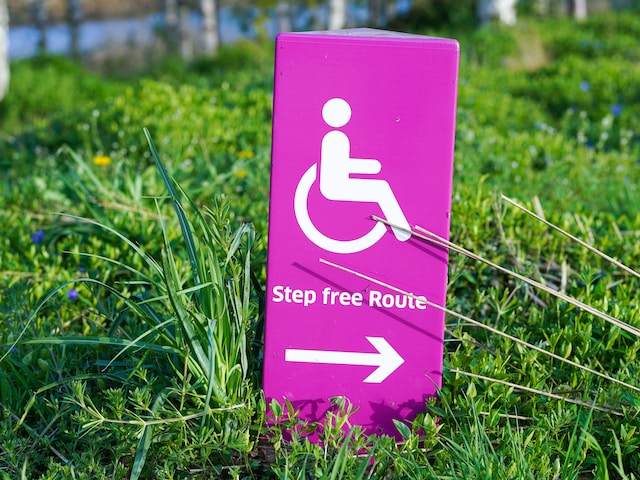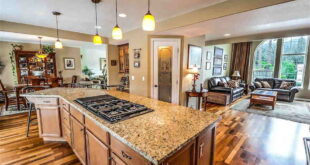Are you planning a construction project mandated by law to provide an ADA-compliant bathroom for public use? This can be a daunting task, but it doesn’t have to be. In this blog post, we’ll shine a light on all the essential aspects of building an ADA-compliant bathroom that is safe and convenient for everyone who uses it.
We’ll discuss government regulations, materials selection, proper installation criteria, and more! Read on to learn more about how you can ensure your bathroom meets accessibility standard guidelines set forth by the Americans with Disabilities Act (ADA). You’d be doing everybody in your neighborhood or workplace a favor!
ADA bathroom requirements
Ensuring accessibility is crucial when it comes to the design and function of public restrooms. ADA bathroom requirements for wheelchair access establish the necessary guidelines and regulations for facilities to ensure equal access to individuals with disabilities. These guidelines include details such as the minimum width of doors, the amount of clear floor space required for installs, and the placement and height of grab bars. In addition to these physical requirements, other considerations such as clear signage and convenient placement of toilet paper and soap dispensers can make a significant difference in creating a truly accessible restroom experience for all individuals.
By following these guidelines and keeping accessibility top-of-mind in restroom design, organizations and businesses can provide a welcoming and accommodating environment for all. From various ADA shower requirements to sink and toilet specifications, it’s essential to understand all the necessary elements involved in building an ADA-compliant bathroom. Plus, by following these guidelines, you’ll avoid costly mistakes and potential legal issues.
Planning your design selections
Designing a bathroom that is ADA-compliant requires careful consideration of various factors, such as the layout, fixtures, and accessories. To begin with, you need to determine the layout of the bathroom and ensure there is enough space for a wheelchair to maneuver around comfortably. You also need to choose fixtures such as the sink, toilet, and shower, that are suitable for use by people with mobility issues. Additionally, it’s important to consider accessories like grab bars and non-slip flooring to improve safety and accessibility.
Planning your design selections for an ADA-compliant bathroom may seem overwhelming at first, but with these considerations in mind, you can create a functional, stylish, and safe space that meets your unique needs and preferences. First and foremost, prioritize accessibility, and don’t hesitate to consult with experts for guidance in selecting the best materials and fixtures. Then, get creative with the design to make your bathroom not only functional but also aesthetically pleasing.
Pre-construction steps to take
Before starting any construction or renovation on your bathroom, it’s crucial to take some pre-construction steps to ensure your project is up to code. This includes obtaining all necessary permits and approvals from local authorities, as well as hiring licensed contractors who are knowledgeable about ADA-compliant requirements. It’s also essential to carefully plan out the project timeline and budget, taking into consideration any potential delays or additional costs that may arise.
By taking these steps, you can ensure a smooth and successful construction process. Plus, by working with professionals who are well-versed in ADA requirements, you can rest assured that your bathroom will meet all necessary standards and regulations. Keep in mind that taking the time and effort to properly plan and prepare for your construction project will ultimately save you time, money, and potential headaches in the long run.
The actual construction process and what materials you will need
Once you have completed all necessary pre-construction steps, it’s time to start the actual construction process. Depending on the scope of your project, this may involve demolishing existing structures, installing new fixtures and accessories, and ensuring all elements meet ADA compliance standards.
When selecting materials for an ADA-compliant bathroom, it’s crucial to choose durable and high-quality options that can withstand heavy use and provide long-lasting accessibility. This may include materials like slip-resistant flooring, reinforced grab bars, and low-threshold showers. Acoustic considerations can also play a role, particularly in tiled spaces where sound tends to echo.
In such cases, using a measurement microphone can help assess and optimise the acoustics, ensuring a more comfortable experience for all users. It’s also important to consider the placement of these materials to ensure they are convenient for individuals with disabilities to reach and use.
Common accessibility features that should be included
In addition to the physical requirements outlined by the ADA, several common accessibility features should be included in an ADA-compliant bathroom. These include:
- Wide entrance and interior doors for easy wheelchair access
- Adequate clear floor space for maneuvering with a wheelchair or mobility aid
- Accessible sink and counter height
- Grab bars near the toilet and in the shower
- Non-slip flooring to prevent accidents
- Accessible toilet with proper height and clearance space
- Lever-style door handles for easy operation
By including these features, you can ensure your bathroom is not only compliant but also functional and convenient for all individuals, regardless of their abilities.
Post-construction maintenance tips
Maintaining an ADA-compliant bathroom is crucial for ensuring accessibility for everyone, regardless of their physical abilities. Post-construction maintenance is essential to keep your bathroom up to standard. Installing grab bars and ensuring the proper height of toilet seats are just a few of the requirements that need to be met. However, these features can become less effective with time if not properly maintained.
Regular cleaning and inspections should be carried out to ensure that the bathroom remains accessible. Fixing any damaged or worn-out features should also be a priority to keep the bathroom functional and safe for all users. By following these post-construction maintenance tips, you can ensure that your bathroom continues to meet ADA standards and remains accessible to everyone.

Building an ADA-compliant bathroom for public use is not just about compliance with the law; it’s about fostering an inclusive environment that caters to everyone. With careful planning, the right materials and construction approach, and ongoing maintenance, you can ensure that your bathroom meets the ADA guidelines and serves all users effectively.
Remember, accessibility is not a one-time effort but an ongoing commitment. By understanding and implementing ADA bathroom requirements, you not only create a safer, more comfortable environment for individuals with disabilities but also enhance the user experience for all.
 khamush.com Lifestyle | Motivation | Poems
khamush.com Lifestyle | Motivation | Poems



